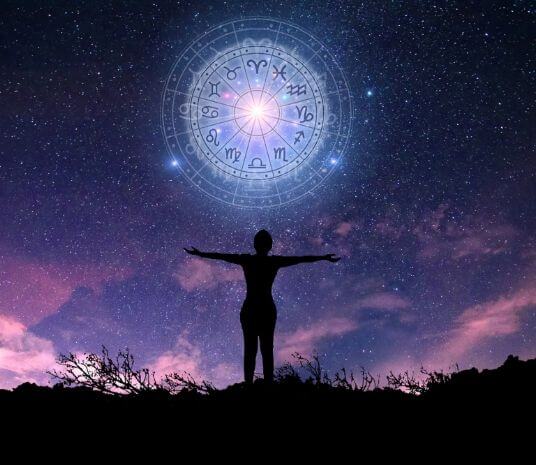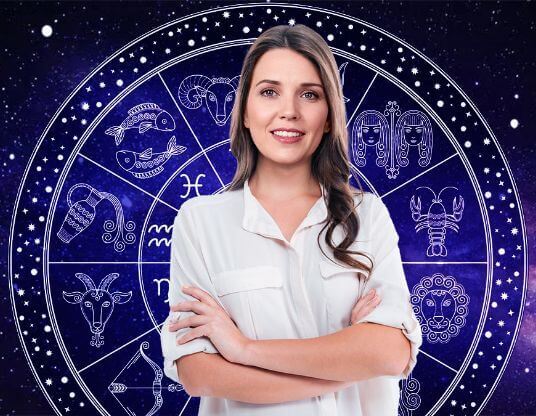The Babylonians are generally credited with the birth of astrology. Their astrological charts enabled them to predict the recurrence of seasons and certain celestial events. So in the beginning and for more than 2,000 years, astrology and astronomy were the same science.
Babylonian astrology was introduced to the Greeks early in the 4th century B.C. and, through the studies of Plato, Aristotle, and others, astrology came to be highly regarded as a science. It was soon embraced by the Romans (the Roman names for the zodiacal signs are still used today) and the Arabs and later spread throughout the entire world.
While earliest astrology was used to bring a sense of order out of apparent chaos, it was soon utilized to predict weather patterns, primarily for agricultural purposes. It was eventually broadened to include forecasts of natural disasters and war and other events in the course of human affairs. Amassing successes in these fields, it was a natural progression for astrology to be used as counsel for kings and emperors and, in time, for all of us.


The zodiac (which is derived from the Greek word meaning “circle of animals”) is believed to have developed in ancient Egypt and later adopted by the Babylonians. Early astrologers knew it took 12 lunar cycles (i.e., months) for the sun to return to its original position. They then identified 12 constellations that they observed were linked to the progression of the seasons and assigned them names of certain animals and persons (in Babylonia, for example, the rainy season was found to occur when the Sun was in a particular constellation which was then named Aquarius, or water bearer).
The signs of the zodiac are subdivided into four groups:
Each of these four groups is inscribed in its own quadrant, or group of “houses,” on a circle. The division of the 12 houses is based on Earth’s daily rotation and relates to such circumstances as relationships, finances, travel, etc. The division of the 12 signs of the zodiac, on the other hand, is based on the earth’s year-long rotation around the Sun and relates to character traits and areas of life (e.g., Venus represents affection, Mercury represents speech and writing, etc.). Each planet is associated with two signs, and the Sun and Moon with one each.
Approximately 2000 B.C., Babylonian astrologers believed that the Sun, Moon, and the five planets known at that time (Jupiter, Mars, Mercury, Saturn, and Venus) possessed distinct powers. Mars, for example, appeared to be red and was associated with aggression and war.
A horoscope is a map of the zodiacal circle with Earth at the center. The top of the circle represents the Sun at its highest point during the day and left and right of that are the eastern and western horizons.
Your horoscope charts the relative positions of the Sun, Moon, planets, and stars at a specific time and place of your choosing (e.g., the date, time and location of your birth). Astrologers don’t use “clock time.” Rather, they measure it as “sidereal” time, as measured from the sun’s position at the spring equinox.
Once the date and time are selected and calculated as sidereal time and the location known and plotted, the astrologer consults an astronomical ephemeris (a table listing the locations of the Sun, Moon, planets, and constellations at any given time) to construct the chart.
While all this used to be tedious and exacting, computer software programs have made it extremely easy. The science of constructing a chart, however, is only the first step. Proper interpretation of the chart is both an art and a science. Properly done, it reveals personality insights and current trends, and should only be entrusted to a highly trained and accredited astrologer.


Interest in astrology has persisted throughout the centuries, occasionally falling out of favor but always rebounding. Today, with practitioners in nearly every country, astrology’s popularity is stronger than ever.
Some may regard astrology as superstitious nonsense and without scientific basis. Others acknowledge the gravitational forces exerted on our planet by the Sun and Moon and deduce that the planets have similar powers that can be charted through astrology. Still others maintain that the symbolism of astrology can provide a deeper understanding of ourselves and of events.
The ancient civilizations are gone, but their gift of astrology survives. If it didn’t work, it would long ago have taken its place alongside them in the footnotes of history.
We welcome you on your exciting and rewarding journey as you continue to explore astrology, the oldest of the sciences!
Astrology is an all-encompassing art/science which has far-reaching consequences in the lives of countless numbers of people worldwide. For centuries it has been respected, yet ridiculed in almost the same breath. We have only to turn to the authority of the Encyclopedia Brittanica, which defines astrology as a science: “The ancient art or science of divining the fate and future of human beings from indications given by the position of stars and other heavenly bodies.”
An ancient art/science, astrology antedates all of recorded history. Its influence reaches back to the time when gods are said to have walked and talked with men. It was studied and practiced by all the great nations of antiquity and predates the sacred writings of nearly all religions and philosophies.
Astrology’s supporters extend from Plato to Copernicus to Sir Isaac Newton to Flamstead (the great Astronomer Royal who helped to build the Greenwich Observatory) to former First Lady Nancy Reagan, as well as countless business and financial people and others.
Despite the fact that scientists today are dealing with cosmic rays and their influence upon people and Earth, they hold widely divergent views of the validity of astrology. Opinions range from the abrupt dismissal to those who have no knowledge but upon confrontation become instant “experts” as to its merits and advantages. One thing is certain, few other topics stimulate as much debate as astrology.
To complicate the verification process of the authenticity of astrology, astrologers use various systems in establishing horoscope charts, the basic tool of the trade. Chart reading is an art that embraces many different concepts. The one common denominator is agreement upon the resulting chart or delineation process, if properly performed.
The American Federation of Astrologers, Inc. was established and incorporated May 4, 1938 at 11:38 a.m. EST in Washington, D.C. to encourage the study of all scientific methods of astrology, both current and future, leading to the spread of astrological knowledge and its understanding throughout the world. AFA’s mission is education, research, cooperation, progress. In addition, AFA is today fulfilling its mission of astrological education through its correspondence course, which provides the student with all the tools necessary to become an astrologer.
The challenges facing people today are greater than at any other time in the history of mankind, and available solutions are more difficult to obtain. Astrologers recognize these conditions and want to participate in helping others to successfully meet the challenges of life.
We, the astrologers, are as old as antiquity yet as new as today’s technological changes. The AFA looks to research, using all of the tools of statistics, philosophy, and eons of experiences to lead the way into a better and more productive service to and for people.
We have the most valuable product in the world, and our principal purpose is to serve you!